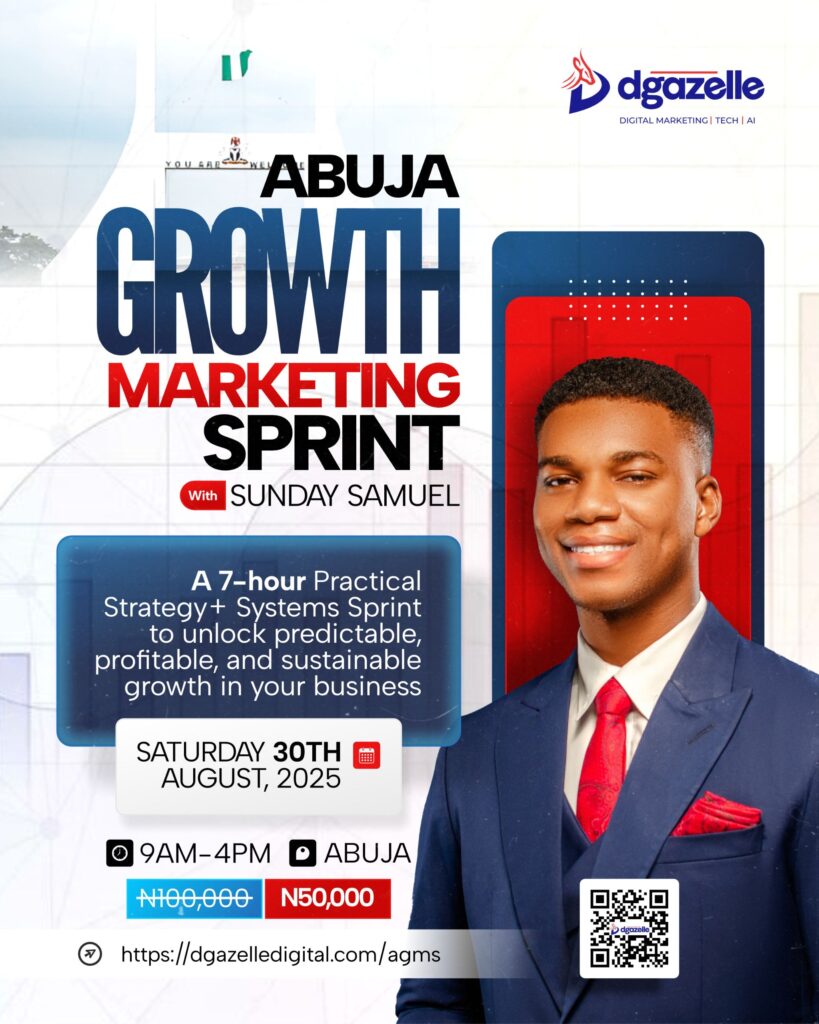Introduction
Does your team’s marketing plan undergo a thorough annual review? Maybe you should
Things may get complicated without a yearly marketing plan, and without one, it’s almost hard to estimate how much money you’ll need for initiatives, hiring, and outsourcing during the course of the year.
We’ve put together a list of things to include in your plan and a few different planning templates so you can quickly fill in the blanks and create a better plan.
Let’s start by discussing what a marketing plan is, how to write a marketing plan and then examine the contents of a high-level marketing plan.
Marketing Plan Outline
Marketing plans may be extremely technical to reflect the sector you’re in, whether you’re selling to consumers (B2C) or other companies (B2B), and how big your online reputation is. However, here are the fundamentals that any great marketing strategy includes:
1. Business Summary
In a marketing plan, your business summary summarizes everything about the business. Include all important information so that all stakeholders, have a thorough understanding of your business before moving on to the more strategic aspects of your plan. Even if you’re presenting your plan to long-term employees, getting everyone on the same page is beneficial.
Most business summaries contain:
- The company’s name
- Where is its headquarters?
- The mission statement
2. SWOT Analysis
The business overview of your marketing plan also includes a SWOT analysis that addresses the opportunities, threats, weaknesses, and strengths of your company. This information must be included in order for you to develop focused tactics that will enable you to build on your advantages and mitigate your disadvantages.
In my perspective, conducting a SWOT analysis takes a lot of patience since, in order for it to be completely accurate, market research and competitor analysis are necessary. I usually come back to this area from time to time and make changes based on new information I learn about my industry and competitors.
3. Business Initiatives
A marketing plan’s business initiatives section aids in organizing your department’s numerous objectives. Take cautious not to include corporate projects that are more broad in nature—these are often included in a business strategy. The projects that are unique to marketing should be described in this area. Additionally, you will outline the projects’ objectives and the metrics by which they will be judged.
Every effort should set goals using the SMART technique. They ought to be time-bound, relevant, measurable, reachable, and detailed. A general objective could be, “Grow my Instagram following,” for instance. However, this objective may be SMARTened up to something like “Grow my Instagram following by twenty percent by September.” Do you notice the difference?
4. Customer Analysis
You have lots of room in this section of the marketing plan outline to present all the information you gathered from your market research. It may be simpler to put together this portion of your marketing plan if your business has already conducted a thorough market research study. In any case, make an effort to conduct research before compiling it into a paper that can be shared, like this one.
In the end, this part of your marketing strategy will assist you in defining your buyer persona and the industry you’re selling to. A semi-fictional depiction of your ideal client, with an emphasis on characteristics such as:
- Age
- Whereabouts
- Title Objectives
- Individual difficulties
- Anguish
- Setting off an event
5. Competitor Analysis
When writing a marketing plan, a competitive analysis must be included. When it comes to finding answers to their problems, your buyer persona has options. These options include the kinds of solutions they are considering and the suppliers who can implement them. You should analyze your competitors’ strengths and weaknesses as well as any gaps in the market that you might be able to close throughout your market research. This may consist of:
- Setting Up
- Market portion
- Products and Prices
A solid marketing strategy should include room to mention the specific products you compete with, along with other aspects of the other company’s approach, such their customer service reputation or blogging endeavors. Keep this section of your plan straightforward; complete your competition analysis in a different document.
6. Budget
When I created my first marketing plan, I made the error of conflating the marketing budget section of my initial marketing strategy with the pricing of my product and other financial information.
A better way to approach this section is to think of it as describing the amount of money that the company has given the marketing team to pursue the projects and objectives listed in the elements above.
You should think about itemizing this budget based on the exact items you plan to spend it on, depending on the number of separate expenses you have. Examples of marketing costs are as follows:
- contracting out expenses to a marketing firm and/or other suppliers
- Software for marketing
- advertisements that cost money
- Events that you will either host or attend
Knowing the budget and doing analysis on the marketing channels you want to invest in, you should be able to come up with a plan for how much budget to invest in which tactics based on expected ROI. From there, you’ll be able to come up with financial projections for the year. These won’t be 100% accurate but can help with executive planning.
7. Marketing plan Channels
A list of your marketing channels ought to be part of your marketing strategy. Although your business may use specific ad space to sell the product itself, your marketing channels are where you will post the content that informs consumers, creates leads, and builds brand awareness.
This is the place to discuss publishing on social media, if you currently publish or want to post. Map out the social networks you want to start a business page on, what you’ll use the network for, and how you’ll measure your success on it using the Marketing Channels portion of your marketing plan.
It could be a good idea to use content marketing tools and turn lengthy content into more manageable social media updates if you also have a blog. This increases website traffic and optimizes return on investment. However, make sure to address it in this section.
How to Create a Marketing Plan
1. Evaluate the situation at hand.
I start by performing a SWOT analysis before drafting a marketing plan. It assists me in identifying the advantages, disadvantages, opportunities, and dangers that the business faces.
I also need a clear sense of the state of the market right now. How do I stack up against my rivals? Analyzing competitors can be beneficial.
By doing this, I can spot the weaknesses (and possibilities) in a rival’s strategy. What do they not have? What advantage will I have over the competition with what I can offer?
This takes us to step number two: by answering questions like these, you should be able to determine what your customer wants.
2. Identify who your target market is.
In the event that your business currently has buyer personas, this stage may only need you to improve upon them. You
However, you ought to make a buyer persona if you don’t already have one. You may need to carry out market research in order to do this.
You should incorporate demographic data like age, gender, and income into your buyer persona. But it will also contain psychographic data, including goals and pain areas. What motivates the people in your audience? What issues do they have that your offering can help with?
This information will help you clarify your goals once you have it written down, which leads us to step three.
3. Write SMART goals.
You can’t go to a new city unless you have a road map or a guide in that new city, and it also be applied to marketing. You can’t improve your ROI unless you know what your goals are.
You can start defining your SMART goals after you’ve assessed your existing position and identified your target audience.
SMART objectives are time-bound, relevant, quantifiable, specified, and reachable. This implies that every goal you set for yourself should have a clear end date and be defined.
For instance, your objective can be to gain 15% more Instagram followers in three months. This should be relevant and doable based on your overall marketing objectives. This objective is also time-bound, quantifiable, and specified.
You should put your objectives in writing before you begin any strategy. After that, you may start evaluating which strategies will enable you to accomplish that aim. This takes us to the fourth phase.
4. Examine your strategies.
You’ve now put your objectives in writing, taking into account your target audience as well as the circumstances at hand.
You now need to choose which strategies will enable you to reach your objectives. In addition, which channels and tasks should I concentrate on?
For instance, your strategies can be holding a contest, replying to each and every remark, and posting three times a week on Instagram if your objective is to gain 15% more followers in three months.
Once you are aware of your objectives, coming up with multiple strategies to reach them should be simple. That being said, unless you had an infinite budget, which would make us jealous, you might not be able to implement every strategy on your list. This gets us to step number five.
5. Decide on your spending limit.
Knowing your budget is necessary before you can start putting any of the ideas you came up with in the previous steps into practice.
One of your strategies could be social media advertising, for instance. You might not be able to accomplish your goals, though, if you don’t have the money for it.
Make sure to include a rough budget when you’re outlining your strategies. Along with any assets you might need to buy, like ad space, you can also specify the amount of time it will take to accomplish each technique.
After learning how to write a marketing strategy, let’s get started on writing a marketing campaign outline that will enable you to accomplish the objectives listed in the plan.
Marketing Plan Timeline
Launching a new marketing strategy requires a lot of work. You should construct a timeline that details the dates and times of each of your tasks so that you can ensure that everything is proceeding as planned.
Your team can monitor all projects, campaigns, events, and other associated tasks in one location, along with their deadlines, using a marketing strategy timeline. By doing this, you can be sure that everyone in your team is aware of what needs to get done, when, and what’s coming up next. These plans usually cover marketing expenses for the full year, while some businesses might work on a quarterly or biannual basis.
It’s time to give your tasks dates after you’ve finished your analysis, research, and goals. Everything will require a deadline, including the release of new products and content efforts such as blog postings. Include in your calculations any holidays or other annual events.
Although it may seem overwhelming to set deadlines for the full year, begin by estimating the time you believe each task will take and adjust the deadline accordingly. Keep track of how long it actually takes you to finish jobs that are comparable to each other. You’ll be able to set more precise deadlines once you’ve finished a few of them and will have a better understanding of how long each one takes.
You should budget time for each project to account for:
Brainstorming: This is the initial stage in which a project plan is created from your idea. Choose the goals you want to pursue and the parties you need to involve to get there. Decide on a deadline and schedule any required meetings.
Planning can involve establishing the project’s scope, calculating the funding that will be used, setting deadlines, and assigning personnel to specific tasks. For every project, identify the campaigns that will be required (social media, PR, sales promotions, landing pages, events, etc.).
Execution: The launch of your idea is the main focus of this third stage. Select a launch date and keep an eye on the project’s development. Create a system to monitor KPIs and metrics.
Analysis: To determine whether or not your marketing efforts were successful, you will examine all of your performance data in this last stage. Did you achieve your objectives? Have you finished your tasks on schedule and on budget?
In summary
A thorough grasp of your company, well-defined goals, clever marketing techniques, and continual performance assessment are necessary for crafting an exceptional marketing plan. You’ll be well on your way to creating a marketing strategy that propels growth and establishes your company as a leader in the field if you follow these five simple steps.
GET IN TOUCH
Get in touch with Dgazelle for expert assistance in creating a customized marketing plan for your company. We’re here to use our knowledge and creativity to assist you in reaching your marketing objectives.







